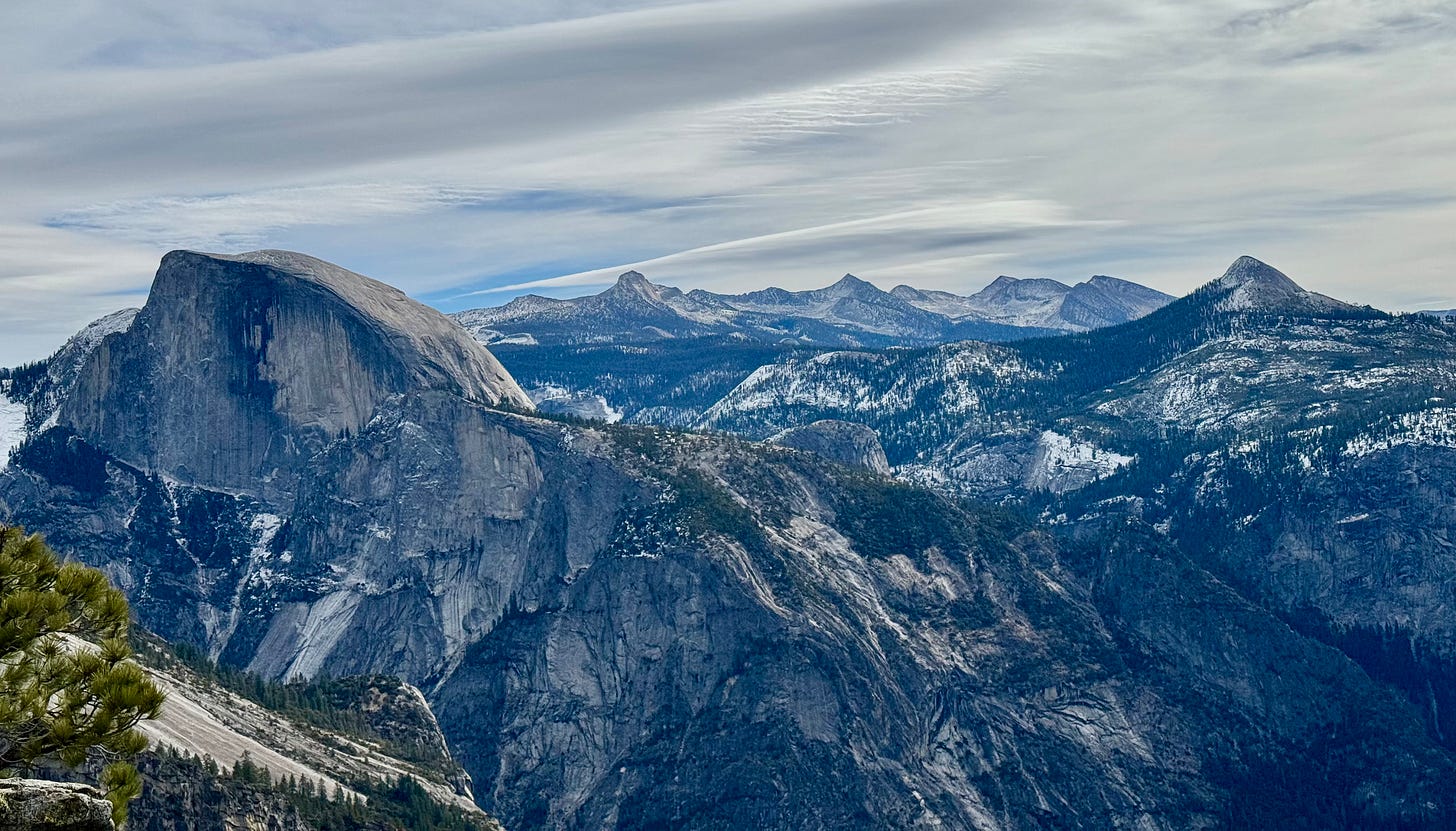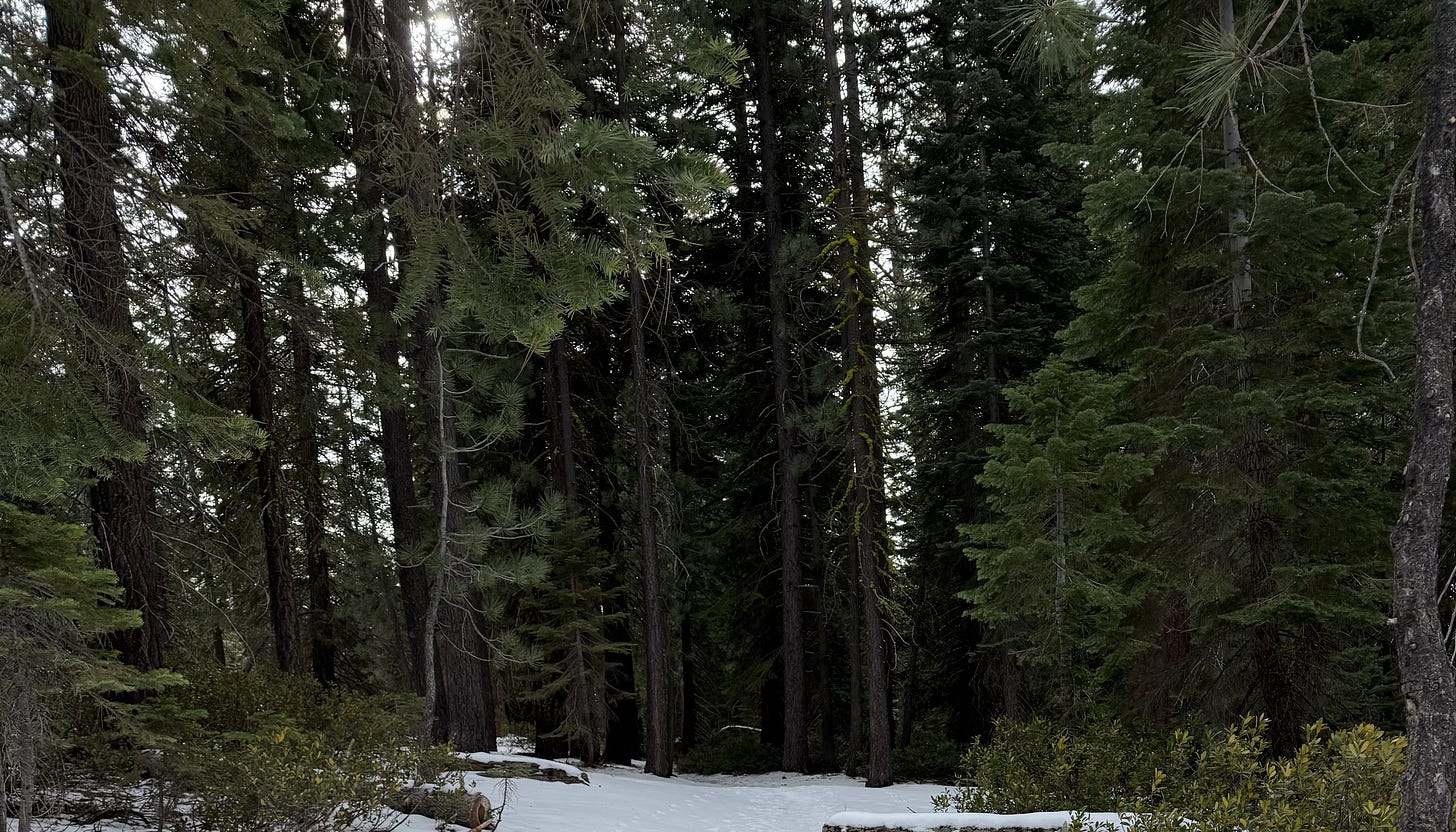Tiny explorers
I caught the last day of good weather in Yosemite to enjoy the subtle company of the trees. Hiking alone has a more reflective character than hiking with friends. The warmth of company gives way to the steadiness of self-reliance. The casual banter is replaced by the voices of the forest: the wind streaming through the lattice of branches, the birdsong, the distant crash of rockfall. Occasionally some more immediate noise intrudes on the relative silence: a branch snapping, the crunch of leaves, a trickle of dirt and pebbles as something slides on the slope. Whenever this happens I stop short and slowly scan the forest for apex predators. Each subsequent rustling increases my sudden conviction that every mountain lion in the western Sierra is converging on my location. The cats, of course, fail to materialize; many things in life are this way.
I eat lunch (a peanut butter sandwich with exterior faces coated to maximize peanut butter) on the edge of a thousand-foot precipice. I’ve never been afraid of heights; nothing is going to pick you up and hurl you over.
After a few hours, I come over the rim of the valley. From there it is possible to see not only the immense, cracking shields of granite that form the walls, domes, and spires that populate this place, but also distant snowy peaks projecting indifferently into the heavens. Here, where the line of sight extends for a hundred miles or more, where glaciated monoliths rend the sky, what is true in all places becomes more obvious. All of our stories and history and identity are mere tracks in the snow. We are tiny explorers in a landscape of giants.
But I leave the rim, and venture into the upper forest. The trees block the view, the trees block the sky. This is a lonely place, and there are no footprints in the snow but the crosshatched treads of my own boots.
A few hours later I walk out of those woods. And this is where the story ends, because what follows is different.





